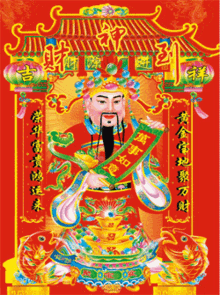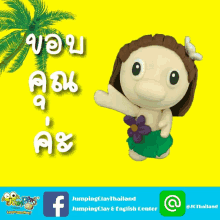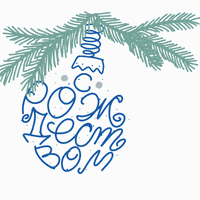Posted by: site admin @ 8:25 am
𝓛𝓔𝓢𝓢𝓞𝓝 4129 Fri 22 Oct 2021
Aboriginal Awakened Societies Thunder ” Hum Prapanch Prabuddha
Prapanchmay karunge.” (We will make the whole world Prabuddha Prapanch
 Online Positive Universal Prabuddha Intellectuals Convention.
Online Positive Universal Prabuddha Intellectuals Convention.
After Bath Practice Patanjali Yogic Meditation From 04:00 AM to 05:00 AM at
𝙆𝙪𝙨𝙝𝙞𝙣𝙖𝙧𝙖 𝙉𝙄𝘽𝘽Ā𝙉𝘼 𝘽𝙃𝙐𝙈𝙄 𝙋𝙖𝙜𝙤𝙙𝙖
18𝙛𝙩 𝘿𝙞𝙖. 𝙖 3𝘿 360 𝙙𝙚𝙜𝙧𝙚𝙚 𝙘𝙞𝙧𝙘𝙪𝙡𝙖𝙧 𝙋𝙖𝙜𝙤𝙙𝙖 𝙖𝙩
𝙒𝙝𝙞𝙩𝙚 𝙃𝙤𝙢𝙚,
668 5𝙩𝙝 𝘼 𝙈𝙖𝙞𝙣 𝙍𝙤𝙖𝙙,
8𝙩𝙝 𝘾𝙧𝙤𝙨𝙨, 𝙃𝘼𝙇 𝙄𝙄𝙄 𝙎𝙩𝙖𝙜𝙚,
𝙋𝙪𝙣𝙞𝙮𝙖 𝘽𝙃𝙐𝙈𝙄 𝘽𝙚𝙣𝙜𝙖𝙡𝙪𝙧𝙪,
𝙈𝙖𝙜𝙖𝙙𝙝𝙞 𝙆𝙖𝙧𝙣𝙖𝙩𝙖𝙠𝙖,
𝙋𝙧𝙖𝙗𝙪𝙙𝙙𝙝𝙖 𝘽𝙝𝙖𝙧𝙖𝙩 𝙄𝙣𝙩𝙚𝙧𝙣𝙖𝙩𝙞𝙤𝙣𝙖𝙡

𝙗𝙪𝙙𝙙𝙝𝙖𝙨𝙖𝙞𝙙2𝙪𝙨@𝙜𝙢𝙖𝙞𝙡.𝙘𝙤𝙢
𝙟𝙘𝙨4𝙚𝙫𝙚𝙧@𝙤𝙪𝙩𝙡𝙤𝙤𝙠.𝙘𝙤𝙢
𝙟𝙘𝙝𝙖𝙣𝙙𝙧𝙖𝙨𝙚𝙠𝙝𝙖𝙧𝙖𝙣@𝙮𝙖𝙝𝙤𝙤.𝙘𝙤𝙢
080-25203792
9449260443
9449835875
Spread the Words of Buddha from
𝙝𝙩𝙩𝙥://𝙨𝙖𝙧𝙫𝙖𝙟𝙖𝙣.𝙖𝙢𝙗𝙚𝙙𝙠𝙖𝙧.𝙤𝙧𝙜, WhatApp, Telegram,Facebook, Twitter, more than 5000 Emails.
Practicing Mindful Swimming at Dolphin Aquatics at Halasuru from 05:30 AM to 07:00 AM
Prakrit is the spoken language of the ancient Magadha kingdom, one of
the 16 city-state kingdoms at the time, located in the eastern Indian
subcontinent, in a region around modern-day Bihār, and spanning what is
now eastern India, Bangladesh, and Nepal. The first Magadha king is
Bimbisara (558 BC –491 BC), during whose reign the Buddha attained
enlightenment. Both king Bimbisara and his successor
a just born baby is separated and kept in isolation, after some days it
will speak a natural human language just like all other species like
birds, animals, inspects etc have their own languages for communication.
must be taught in Tamil; preaching and worshipping Buddhism in Tamil;
Tamil Bikkus should have world followers and Tamil Bhikkus must visit
their homes. That togetherness should be there.
fascinating story of the historical links - Golden threads between
Buddhism in Tamil Nadu and all over the world was narrated by Dr. Shu
Hikosake, Director and Professor of Buddhism, Institute of Asian Studies
in Madras in his book 1989 Buddhism in Tamil Nadu: a New Perspective.
Dr. Hikosaka’s study is based on his doctoral dissertation.
earliest inscriptions in Tamil Nadu written in the Brahmi character of
the time, on the walls of the natural caves in the Tamil districts of
Madura, Ramnad and Tirnnelveli belongs to the third century BC. They are
of considerable interest to students of South Indian Buddhism. It is
learnt from these Brahmi inscriptions, that Buddhism had come into Tamil
Nadu even then. However, the epigraphical evidence seems to confirm
that, it was to King Asoka and the missionary monk Mahinda (believed to
be his son) that the introduction of Buddhism into Tamil Nadu may be
attributed. In his Rock-Edict No. III, King Asoka says that his Dharma
Vijaya prevailed in the kingdoms of the Colas, Pandyans and at
Tambapanni (Sri Lanka). Particularly the edict number XIII found near
Peshawar, there is reference to the Buddhist missions of Asoka. Among
the countries referred to are Cola, Pandya, and Tambapanni. This
inscription was written in 258 B.C. and is direct evidence of the
Buddhist missions of Asoka to the Tamil country and Sri Lanka even
though it does not mention about his son Mahinda. As Buddhist missions
to Sri Lanka had to come by way of South India, the spread of Buddhism
in Sri Lanka and South India in the 2nd century AD should be considered
contemporary events, but it was King Asoka’s son Mahinda who was
responsible for the introduction of Buddhism in Tamil Nadu and Sri
Lanka. Mahinda is said to have erected seven viharas at Kaveripattinum,
the capital of Cola while he was on his way to Sri Lanka. According to
Dr. Hikosaka, contrary to the general impression, Buddhism might have
gone to Sri Lanka from Tamil Nadu by sea-route, a route by which one can
reach Sri Lanka easily. Since there existed very close cultural
affinities between Sri Lanka and the Tamil country from time immemorial,
the Buddhist activities in India could have easily influenced in some
way or other the Buddhism of Sri Lanka, says Dr. Hikosaka.
though it is believed that Buddha had visited this region, South India
(Andhra) and Sri Lanka, according to historians, Buddhism began to make a
strong impact on Tamil Nadu only in the 3rd century AD. During that
period Buddhism had spread widely in Tamil Nadu and won the patronage of
the rulers. The remains of a Buddhist monastery excavated at
Kaveripattinum which could be assigned to the fourth century are
believed to be the earliest archaeological relics of Buddhism in Tamil
Nadu. The major urban centers of Kanchipuram, Kaveripattinam, Uragapura
(Uraiyur), and Madurai were not only centers of Buddhism, but these were
also important centers of Pali learning. The other minor towns of Tamil
country where Buddhism was active were Buddhamangalam, Sanghamangalam,
Kumbakonam, Mayurapattanam, Alamkudipatti, Kuvam, Sanghamangai,
Tiruppadirippuliyur, and so on.
was at this time that Tamil Nadu gave some of its greatest scholars
(both Theravada and Mahayana) to the Buddhist world. Tamil Nadu boasted
of outstanding Buddhist monks, who had made remarkable contributions to
Buddhist thought and learning. Three of the greatest Pali scholars of
this period were Buddhaghosa, Buddhadatta, and Dhammapala and all three
of them were associated with Buddhist establishments in the Tamil
kingdoms.
or Thera Buddhaatta as he is called lived during the time of
Accyutarikkanta, the Kalabra ruler of the Cola-Nadu; was a senior
contemporary of Buddhaghosa. He was born in the Cola kingdom and lived
in the 5th Century AD. Under the patronage of this ruler, Buddhadatta
wrote many books. Among his best known Pali writings are the
Vinaya-Vinicchaya, the Uttara-Vinicchaya and the Jinalankara-Kavya.
Among the commentaries written by him are the Madhurattha-Vilasini and
the Abhidhammavatara. In the Abhidhammaratara he gives a glowing account
at Kaveripattinum, Uragapuram, Bhutamangalam and Kanchipuram and the
Mahavihara at Anuradapura, (Sri Lanka).
While he was at Sri Lanka, he
composed many Buddhist works such as Uttara-viniccaya Ruparupa Vibhaga
Jinalankara etc. Buddhaghosha, contemporary of Buddhadatta also composed
many Buddhist commentaries.
is a Tamil monk, who made a remarkable contribution to Buddhism in Sri
Lanka. He stayed and studied Buddhist precepts at Mahavihara in
Anuradhapura. The Visuddhimagga was the first work of Buddhaghosha which
was written while he was in Sri Lanka.
Buddhaghosha, the important Theravada monk from the Tamil country was
Dhammapala. Dhammapala lived in the Mahavihara at Anuradhapura. He
composed paramathadipani which was a commentary on Buddhaghosha’s work
on Khuddaka Nikaya and Paramathamanjusa, which was a commentary on
Buddhaghosha’s Visuddhimagga. A close study of the three Buddhist monks
viz Buddhadatta, Buddhaghosha and Dhammapala shows that Tamil Buddhists
were closely associated with the Sri Lankan Buddhists around the 5th
century AD.
author of Nettipakarana is another Dhammapala who was a resident of a
monastery in Nagapattinam, another important Buddhist centre from
ancient times. One more example is the Cola monk Kassapa, in his Pali
work, Vimatti-Vinodani, this Tamil monk provides interesting information
about the rise of heretical views in the Cola Sangha and the consequent
purification that took place. There are so many other Tamil monks who
are attributed to the Pali works some of them were resident at
Mayura-rupa-pattana (Mylapore, Madras) along with Buddhagosha.
Tamil Buddhist monks used Pali languages in preference to Tamil in
their writings. This is because the Buddha spoke in Magadi Prakrit
(Pali). Sanskrit is the sacred language of the Hindus, and similarly
Pali is considered as the sacred language of the Buddhists. The well
known Tamil Buddhist epics found were Manimekalai, Silappadhikaram,
Valaiyapathi, Kundalakesi, and Jivaka Cintamani. Manimekalai, a purely
Buddhist work of the 3rd Sangam period in Tamil literature is the most
supreme and famous among the Buddhist work done in Tamil Nadu. It is a
work expounding the doctrines and propagating the values of Buddhism.
The interaction between Tamil Nadu and Sri Lankan monks finds mention in
Manimekalai, which is set in the Tamil towns of Kaveipumpattinam,
Kanchi, and Vanchi. There is mention about the presence of wondering
monks of Sri Lanka in Vanchi, which was the capital of the Chera Kings
of Tamil Nadu. The Chinese traveller, Tsuan Tsang, wrote that there were
around 300 Sri Lankan monks in the monastery at the Southern sector of
Kanchipuram. Ancient Kanchipuram, the capital of Tondaimandalam, ruled
by the Tamil Pallava dynasty, an offshoot of Chola rulers was the major
seat of Tamil learning and is also known as the city of thousand
temples. Even Thirukkural, the ancient Tamil couplets/aphorisms
celebrated by Tamils is based on Buddhist principals. Although Buddhism
has become almost extinct from Tamil Nadu, it has contributed a great
deal to the enrichment of Tamil culture and has exerted a significant
influence, both directly and indirectly, on the Tamil religious and
spiritual consciousness, present as well as past.
Buddhism was one of the dominant religions in both Tamil Nadu and Sri
Lanka, naturally there were very close relations between the two
regions. The monks from Sri Lanka, too, went across to the Tamil kingdom
and stayed in the monasteries. As Dr. Leslie Gunawardana says, `The
co-operation between the Buddhist Sangha of South India and Sri Lanka
produced important results which are evident in the Pali works of this
period`. He also says that the Tamil Buddhist monks were more orthodox
than their counterparts in Sri Lanka. Indeed, the relations between the
Tamil and Sinhala Buddhist monks were so close that the latter sought
the assistance of the former in political turmoil.
Sri Lanka, the Tamil Buddhists who followed Theravada Buddhism shared
the common places of worship with the Sinhalese, but there were also
Tamil Buddhists who were following the Mahayana Buddhism and they had
their own Mahayana temples. There are still some Tamil Mahayana Buddhist
establishments (Palli) in the east and possibly in the Jaffna
peninsula. The best known was Velgam Vehera (see details below), which
was renamed Rajaraja-perumpalli after the Cola emperor. Another was the
Vikkirama-calamekan-perumpalli.
ten miles northwest of Trincomalee off the Trincomalee - Horowupothana
road is an ancient Buddhist shrine with origins dating back to the years
before the second century. It is a historical fact that among the many
ancient Buddhist shrines in Sri Lanka Velgam Vehera which was renamed
Rajaraja-perumpalli, also called Natanar Kovil by the present day Tamils
stands out as the only known example of a `Tamil Vihare or Buddhist
Palli` or as the late Dr. Senerath Paranavithana described it in his
book `Glimpses of Ceylon`s Past` as an `Ancient Buddhist shrine of the
Tamil people`. Some of the Tamil inscriptions found at the site record
donations to this shrine and are dated in the reigns of the Chola Kings,
Rajaraja and Rajendradeva. It was his view that the date of the
original foundation of the vihare was no doubt considerably earlier than
the reign of King Bhatika Tissa II.
situation in Tamil Nadu, however, began to change towards the beginning
of the 7th Century AD when the rise of Vaishnavism and Saivism posed a
serious challenge to Buddhism and Jainism. There was a significant
increase in Hindu/Brahmanical influence and soon the worship of Siva and
Visnu began to gain prominence. The Buddhist and Jaina institutions in
Tamil Nadu came under attack when they began to lose popular support and
the patronage from the rulers. One result of this was the migration of
Buddhist and Jaina monks and devoted lay members to kingdoms where they
could find refuge. While the Jainas and Buddhists (mostly Mahayana) were
able to go to Kannada and Andhra/Telugu regions, a large part of the
Buddhists (Theravada) turned to Sri Lanka and assimilated with the local
Buddhist population.
Buddhism flourished in South India in ancient times, the 5th century AD
Pali chronicles such as the Dipavamsa and Mahavamsa written by the
Mahavihara monks of Anuradapura (Sri Lanka) remained silent about the
introduction of Buddhism to South India. This is because, when
Hindu/Brahmanism started reappearing in India and posed a threat to
Buddhism, the Mahavihara monks of Anuradapura (Sri Lanka) due to their
strong devotion to Buddhism and desire to consolidate and protect this
religion in Sri Lanka wrote the Pali chronicles Deepavamsa/Mahavamsa
just to glorify Buddhism and the Buddhist kings of Sri Lanka and not to
record objectively what happened. The `Lion Ancestry` and the myths
about the origin of the Sinhala race as pre-destined, true custodians of
the island of Sri Lanka and guardians of Buddhism is a myth of the
creative authors to protect Buddhism and is not the common true history.
The ancient Sri Lankan Kingdom (Anuradapura) was ruled by both Buddhist
and Hindu kings. There is no evidence what so ever to prove that they
were Sinhala. An analysis of the Pali chronicles (Deepavamsa/Mahavamsa)
makes it very clear that the Mahavihara monks who authored them in the
5th century AD have created the ethnic identity Sinhala, yoked it with
Buddhism and created a new ethno-religious identity in Sri Lanka known
as Sinhala-Buddhist to sustain the religion in the country for 5000
years.
ancient Brahmi inscriptions (before 7th century AD) in Tamil Nadu are
in old Tamil where the Tamil names did not end with an ‘N’ or an ‘M’,
but were very similar to those Sanskrit/Pali names. It was only after
the 7th century AD, that the Tamil language adopted some changes to its
Grammar, script, etc. and evolved into the present form. This might have
happened after the Tamils developing what is commonly called as the
pulli (dot) system which is peculiar to Tamils in particular among the
Indian languages and due to this dot system the words/names ending with
‘A’ ends up with ‘N’ and ‘M’. This is the reason why, in the Pali
chronicles and in the Brahmi stone inscriptions the names of the Tamil
Kings of Anuradhapura were referred to as Sena, Guttika, Elara,
Pulahatha, Bahiya, Panayamara, Parinda, Dathiya, etc and not as Senan,
Guttikan, Ellalan, etc. Similarly in Tamil Nadu, the names of the
ancient kings were referred to as Kulothunga Chola, Vikrma Chola, Aditya
Chola, Kulasekara Pandya, Vira Wickrama Pandya, Parakrama Pandya,
Sundara Pandya, etc.
is believed that most of the Tamil Buddhist literary work has been
destroyed during religious controversies. The loss of Tamil Buddhist
literature was a death blow to Tamil Buddhism. Apart from the Brahmi
inscriptions and other archeological evidence found in Tamil Nadu and
the available Tamil literary works, the Rock-Edicts of King Asoka also
sheds much light on this subject. Even though the Pali chronicles did
not mention the ethnic background of the ancient Sri Lankan Buddhists
and the Buddhist kings right from Devanampiya Tissa, the Mahavamsa
referred to the Non-Buddhist kings as Tamils (invaders).
The above facts and
the non-existence of Tamil Buddhists during the colonial period (due to
the 10th century Chola invasion) led the 19th century European Pali
scholars who translated the Pali chronicles to assume and subsequently
the present day Sri Lankans to believe that the ancient Buddhists and
the Buddhists Kings of Sri Lanka were Sinhalese.
today there are no Tamil Buddhists in Sri Lanka but the majority of the
early Tamils of Sri Lanka (before the 10th century Chola invasion) were
Buddhists. The ancient Buddhist remains in the North and East of Sri
Lanka are the remnants left by the Tamil Buddhists and not anybody else.
They are part of the heritage of Sri Lankan Tamils. Only the Buddhist
temples, statues and structures build in the recent past and present in
the North and East remain as Sinhala-Buddhist.
Lankans must be aware of their past and open to its own people. Sri
Lankans must believe that the Buddhist sites in Sri Lanka belongs to all
people ove the world. They must be aware about the early Tamil
Buddhists of Sri Lanka and Tamil Nadu.In Sri Lanka a Buddhist should be a
Sinhalese and a Tamil.
only the Indians but even the Sri Lankan Tamils must not give up
Buddhism. For them to go back to Buddhism, has 2500 years of Buddhism in
Sri Lanka (the so called Dhammadveepa) influenced any major changes in
the Sinhala society (the so called guardians of Buddhism chosen by none
other than the Buddha) in terms of attitude, character, behavior,
morality and so on. Buddhist monks practicing Ahimsa (non-violence),
Karuna (compassion), Metta (affection), and Maithriya (loving-kindness)
towards fellow humans (irrespective of race/religion).
Sunil Ariyaratne’s dream of future Tamil Buddhists is very genuine and
apt during this period. As he says, it may recreate the togetherness,
the common bond that once existed between the Sinhalese and Tamils. It
will not be a surprise if Nanda Malini sings about the Damila Buddhayo
of the past and the future but can his dream materialize? Of course,
miracles do happen; Martin Luther King Junior’s dream came true so let
us have some hope.
great Maurya emperor Ashoka had erected a Buddhist stupa in present-day
Kancheepuram in the third century BC when the city was an early
Buddhist settlement.
seven-foot high Buddha sculpture in the Kamakshi temple stands
testimony to the strong influence of Buddhismin the region. The
stylistic pattern shows that it’s from the third century BC.
city of Kanchi was known as ‘Kanchimudur’ under the chieftain
Thondaiman Ilanthiryan who ruled the region during the first century AD.
long Tamil poem “Perumpanarupadai” sung by poet Kadiyalur Rudran
Kannanar gives a graphic description of Kanchi city. Karikala Chola
brought Kanchi under his control in the second century and it was from
the third century that the Pallavas started ruling Kancheepuram.
most ancient temple still surviving here is the Kailasantha temple
built by Narasimhavarman during the seventh century AD. “In 1961, some
beautiful pillars inside the temple,with inscriptions, were pulled down.
தமிழில் கற்பிக்கப்பட வேண்டும்; தமிழ் மொழியில் புத்தமதத்தை
பிரசங்கிப்பதும் வணங்குவதற்கும்; தமிழ் பிக்ஸஸ் உலகப் பின்தொடர்பவர்கள்
மற்றும் தமிழ் பிக்ஸஸ் தங்கள் வீடுகளை பார்க்க வேண்டும். அந்த ஒற்றுமை
இருக்க வேண்டும்.
மற்றும் உலகம் முழுவதும் உலகம் முழுவதும் மிகவும் நெருக்கமான உறவுகளை
அனுபவித்து, புத்தமதத்தில் பகிரப்பட்ட ஆர்வத்திற்கு நன்றி.
இணைப்புகளின் கண்கவர் கதை - தமிழ்நாடு மற்றும் உலகெங்கிலும் உள்ள பௌத்த
மதம் மற்றும் உலகெங்கிலும் உள்ள பொன்னுக்கலைகள், இயக்குனர் மற்றும்
பேராசிரியரான டாக்டர் ஷு ஹிகோசேக், 1989 ஆம் ஆண்டு ஞாயிற்றுக்கிழமை
ஞாயிற்றுக்கிழமை உள்ள ஆசிய ஆய்வுகள் நிறுவனம்: a புதிய முன்னோக்கு. டாக்டர்
ஹிகோசாகாவின் ஆய்வு அவரது முனைவர் ஆய்வு அடிப்படையிலானது.
ஆரம்பகால கல்வெட்டுகள், மத்தூராவின் தமிழ் மாவட்டங்களில் உள்ள இயற்கை
குகைகளில் உள்ள இயற்கை குகைகளின் சுவர்களில், மூன்றாம் நூற்றாண்டில் கி.மு.
மூன்றாம் நூற்றாண்டிற்கு சொந்தமானது. தென்னிந்திய புத்தமதத்தின்
மாணவர்களுக்கு அவர்கள் கணிசமான ஆர்வம் உள்ளனர். இந்த பிராமி கல்வெட்டுகளில்
இருந்து கற்றுக் கொண்டால், பௌத்த மதம் தமிழ்நாட்டில் கூட வந்துவிட்டது.
எவ்வாறாயினும், எபிசாபிக் சான்றுகள் உறுதிப்படுத்தப்படுவதாகத் தெரிகிறது,
அது அசோகாவாகவும், மிஷனரி மோங்க் மஹிந்த (அவருடைய மகன் என நம்பப்படுகிறது),
புத்தமதத்தை தமிழ்நாட்டில் அறிமுகப்படுத்தலாம் என்று கூறப்படலாம். அவரது
ராக்-எடிட் எண் III, கிங் அசோகா தனது தர்மம் விஜயா கோலாஸ், பாண்டியர்கள்
மற்றும் தம்பாபானி (இலங்கை) ராஜ்யங்களில் தனது தர்மம் விஜய நிலுவையில்
தெரிவித்தார். குறிப்பாக பெஷாவருக்கு அருகில் உள்ள எடிட் எண் XIII,
அசோகாவின் பௌத்த பயணங்கள் பற்றிய குறிப்பு உள்ளது. கோலா, பாண்டியா மற்றும்
தம்பாபானி ஆகியவற்றைக் குறிப்பிடப்படும் நாடுகளில் உள்ள நாடுகளில். இந்த
கல்வெட்டு 258 B.C. இல் எழுதப்பட்டது. மற்றும் அவரது மகன் மஹிந்த பற்றி
குறிப்பிடவில்லை என்றாலும், தமிழ் நாட்டிற்கும் ஸ்ரீலங்காவிற்கும்
ஆசோக்ஸின் பௌத்த பயணங்கள் பற்றிய நேரடி ஆதாரங்களாகும். ஸ்ரீலங்காவிற்கு
பௌத்த பணிகள் தென்னிந்தியாவிற்கு வந்தபோது, இலங்கை மற்றும்
தென்னிந்தியாவில் உள்ள பௌத்த மதத்தின் பரந்தப் பகுதிகள் சமகால
நிகழ்வுகளாகக் கருதப்பட வேண்டும், ஆனால் அது அறிமுகப்படுத்தியதற்கு
பொறுப்பான அசோகாவின் மகன் மஹிந்த ராஜாவாக இருந்தார் தமிழ்நாடு மற்றும்
இலங்கையில் புத்த மதம். ஸ்ரீலங்காவுக்கு செல்லும் வழியில் கோராவின்
தலைநகரான காவரிபாட்டினத்தில் ஏழு விஹாரஸை மஹிந்ததாக கூறப்படுகிறது. டாக்டர்
ஹிக்கோசாக்கின் கூற்றுப்படி, பொது அபிப்பிராயத்திற்கு மாறாக, பௌத்த மதம்
தமிழ்நாட்டிலிருந்து இலங்கையில் இருந்து இலங்கைக்கு சென்றிருக்கலாம், இது
ஒரு வழியிலிருந்து இலங்கை எளிதில் அடையலாம். ஸ்ரீலங்கா மற்றும் தமிழ்
நாட்டிற்கு இடையேயான கலாச்சார உறவுகள் இருந்தபோதே, இலங்கையிலிருந்து தமிழ்
நாட்டிற்கு இடையேயான கலாச்சார உறவுகளும் இருந்தபோதே, இந்தியாவில் உள்ள
பெளத்த நடவடிக்கைகள் இலங்கையின் புத்தமதத்திலோ அல்லது மற்றவர்களிடமிருந்தோ
அல்லது மற்றவர்களிடமோ செல்வமிழந்திருக்கலாம், டாக்டர்.
இந்த பிராந்தியத்தை பார்வையிட்டதாக நம்பியிருந்தாலும், தென்னிந்தியா
(ஆந்திரா) மற்றும் இலங்கை வரலாற்றாசிரியர்களின்படி, புத்தமதம் 3 ஆம்
நூற்றாண்டில் தமிழகத்தின் மீது வலுவான தாக்கத்தை ஏற்படுத்தத் தொடங்கியது.
அந்த காலத்தில் பௌத்த மதம் தமிழ்நாட்டில் பரவலாக பரவியது மற்றும்
ஆட்சியாளர்களின் ஆதரவை வென்றது. நான்காம் நூற்றாண்டில் ஒதுக்கப்பட்ட
கவேரிப்பாட்டினில் ஒரு பௌத்த மடாலயத்தின் எஞ்சியுள்ள எஞ்சியுள்ள
எஞ்சியுள்ளவர்கள் தமிழ்நாட்டில் பௌத்த மதத்தின் ஆரம்பகால தொல்பொருள்
ஆராய்ச்சிகளாக இருப்பதாக நம்பப்படுகிறது. காஞ்சிபுரம், காவரிபட்டினம்,
உரவபுர (யூராய்ூர்) முக்கிய நகர்ப்புற மையங்கள், மற்றும் மதுரை ஆகியவை
பௌத்த மதத்தின் மையமாக மட்டுமல்லாமல், பாலி கற்றல் முக்கிய மையங்களாக
இருந்தன. புத்தமநாதம் செயலில் உள்ள தமிழ் நாட்டின் மற்ற சிறு நகரங்கள்
புத்தமங்கலம், சங்கமங்கலம், கும்பகோணம், மயுரபட்டம், அலிங்குடிப்பட்டி,
க்வூம், சாங்கமங்காய், திருப்பதிபுலியூர் ஆகியவை இருந்தன.
வேதவாக்கியர்களுக்கு தமிழ்ப் புத்த மதத்தினர் பங்களிக்கிறார்கள்
அவர்
ஸ்ரீலங்காவில் இருந்த சமயத்தில், உத்தரா-வினிகாசாயா ரூபருவு உபகா ஜலங்கா
ஜலங்கரா போன்ற பல பெளத்தப் படைப்புகளை உருவாக்கினார்
ஒரு தமிழ் துறவி, இலங்கையில் புத்தமதத்திற்கு ஒரு குறிப்பிடத்தக்க
பங்களிப்பை செய்தார். அனுராதபுரத்தில் மகாவஹரையில் பௌத்த கட்டளைகளை அவர்
தங்கிவும் படித்தார். புத்தகோஷோவின் முதல் வேலையாக இந்த விசுடிமகாவும் அவர்
இலங்கையில் இருந்தபோது எழுதப்பட்டிருந்தார்.
பின்னர், தமிழ் நாட்டிலிருந்து முக்கியமான தெராவாடா மோன்க் தர்மபாலா.
அனுராதபுரத்தில் மகாவஹராவில் தம்மபாலா வாழ்ந்தார். பெள்தகா நிக்காயா
மற்றும் பரமத்தமஞ்சாஸில் உள்ள புத்தகோஸாவின் வேலை பற்றிய ஒரு வர்ணனையாக
இருந்தது, இது புத்தகோஸாவின் விஸுட்திமகா பற்றிய ஒரு வர்ணனையாகும். மூன்று
பௌத்த துறவிகள் விஸ் புத்ததத்தா, புத்தகோசு மற்றும் தர்மப்பாலா பற்றிய ஒரு
நெருக்கமான ஆய்வு 5 ஆம் நூற்றாண்டில் உள்ள இலங்கை பௌத்தர்களுடனான தமிழ்
புத்தர்கள் நெருக்கமாக தொடர்பு கொண்டுள்ளனர்.
எழுத்தாளர் நாகப்பட்டினத்தில் ஒரு மடாலயத்தின் குடியிருப்பாளராக இருந்த
மற்றொரு தர்மபாலா, பண்டைய காலங்களில் இருந்து மற்றொரு முக்கியமான பௌத்த
மையமாக இருந்தார். ஒரு உதாரணமாக கோலா மோன்க் காஸாப்பா, அவரது பாலி
வேலைகளில், அவரது பாலி வேலைகளில், இந்த தமிழ் மோன்க் கோலா சங்கத்தில் உள்ள
ஹார்டிகல் கருத்துக்களின் எழுச்சி பற்றிய சுவாரஸ்யமான தகவல்களை
வழங்குகிறது. பாலி படைப்புகள் காரணமாக பல தமிழ் துறவிகள்
பிலிரா-ரூபா-பட்டனா (மைலாப்பூர், சென்னை) பட்ஹாகோஷாவுடன் சேர்ந்து
குடியேறினார்கள்.
புத்த மதத் துறவிகள் பாலி மொழிகளைப் பயன்படுத்தி தமது எழுத்துக்களில்
தமிழர்களுக்கு முன்னுரிமை அளித்தனர். ஏனென்றால் புத்தர் மகாதி பிரகிருதி
(பாலி) பேசினார். சமஸ்கிருதம் இந்துக்களின் புனிதமான மொழியாகும், இதேபோல்
பாலி பௌத்தர்களின் புனித மொழியாக பாலி கருதப்படுகிறது. நன்கு அறியப்பட்ட
தமிழ் பௌத்தப் படிப்புகள் மனிமேலை, சிலப்பாடிகராம், வாலபதி, குண்டலேக்கி,
மற்றும் ஜீவக சிந்தமனி ஆகியவை காணப்பட்டன. தமிழ் இலக்கியத்தில் 3 வது
சங்கம் காலப்பகுதிகளில் ஒரு முற்றிலும் பௌத்த வேலை Manimekalai
தமிழ்நாட்டில் செய்த பௌத்த வேலைகளில் மிக உயர்ந்த மற்றும் புகழ்பெற்றது.
இது கோட்பாடுகளை விரிவுபடுத்தும் ஒரு வேலை மற்றும் பௌத்த மதத்தின்
மதிப்புகளை பரப்புகிறது. தமிழ்நாடு மற்றும் ஸ்ரீலங்கா துறவிகள் இடையேயான
தொடர்புகள் Manimekalai இல் குறிப்பிடப்படுவதைக் காண்கிறது, இது தமிழ்
நகரங்களில் உள்ள தமிழ் நகரங்களில் உள்ள தமிழ் நகரங்களில் அமைந்துள்ளது.
தமிழ்நாட்டின் சேரா கிங்ஸ் தலைநகரமாக வாஞ்சியில் ஸ்ரீலங்காவின் துறவிகளின்
சிந்தனையைப் பற்றி குறிப்பிடுவது பற்றி குறிப்பிடப்பட்டுள்ளது. காஞ்சிபுரம்
தெற்கு துறையில் மடாலயத்தில் 300 இலங்கை துறவிகள் இருந்தன என்று சீன பயணி,
சுசான் சுங் எழுதினார். தமிழ் பல்லாவா வம்சத்தால் ஆளப்படும்
டோண்டிமண்டலத்தின் தலைநகரம் பண்டைய காஞ்சிபுரம், சோழ ஆட்சியாளர்களின் ஒரு
புறநகர்ப்பகுதியின் பிரதான ஆசனமாகும், மேலும் ஆயிரம் கோயில்களின்
நகரமாகவும் அறியப்படுகிறது. கூட திருக்குறியா, பண்டைய தமிழ் ஜோடி /
தமிழர்கள் கொண்டாடப்படும் பழக்கவழக்கங்கள் பௌத்த பிரதிகளை அடிப்படையாகக்
கொண்டவை. தமிழ்நாட்டிலிருந்து பெளத்த மதம் கிட்டத்தட்ட அழிந்துவிட்ட
போதிலும், அது தமிழ் கலாச்சாரத்தின் செறிவூட்டலுக்கு ஒரு பெரும் பங்களிப்பை
அளித்துள்ளது.
மற்றும் ஸ்ரீலங்காவில் உள்ள மேலாதிக்க மதங்களில் பௌத்த மதம்
இருந்தபோதிலும், இயற்கையாகவே இரு பகுதிகளுக்கும் இடையே மிக நெருக்கமான
உறவுகள் இருந்தன. இலங்கையின் துறவிகள் கூட, தமிழ் இராச்சியம் முழுவதும்
சென்று மடாலயங்களில் தங்கினர். டாக்டர். லெஸ்லி குணவர்தன, தென்னிந்திய
மற்றும் ஸ்ரீலங்காவின் பெளத்த சாங்காவிற்கு இடையேயான ஒத்துழைப்பு, இந்த
காலத்தின் பாலி படைப்புகளில் தெளிவான முக்கியமான முடிவுகளை உருவாக்கியது.
தமிழ் புத்த மதத் துறவிகள் ஸ்ரீலங்காவில் தங்கள் சகவாதத்தை விட அதிகமான
கட்டுப்பாடானதாக இருப்பதாக அவர் கூறுகிறார். உண்மையில், தமிழ் மற்றும்
சிங்கள பௌத்த துறவிகளுக்கு இடையிலான உறவுகள் மிக நெருக்கமாக இருந்தன,
பிந்தையவர்கள் அரசியல் கொந்தளிப்பில் முன்னாள் உதவியைத் தேடினர்.
தெருவாடா பௌத்த மதத்தை பின்பற்றிய தமிழ் புத்த மதத்தினர் சிங்களவனுடனான
வணக்கத்தின் பொதுவான இடங்களை பகிர்ந்து கொண்டனர், ஆனால் மஹாயன பௌத்தத்தை
தொடர்ந்து வந்த தமிழ் புத்த மதத்தினர் இருந்தனர், மேலும் அவர்கள் மஹாயானா
கோயில்களைக் கொண்டிருந்தனர். கிழக்கில் சில தமிழ் மஹாயானா பௌத்த
நிறுவனங்கள் (பல்லி) இன்னும் யாழ்ப்பாண தீபகற்பத்தில் இருந்தன. சிறந்த
அறியப்பட்ட Velgam Vehera (கீழே உள்ள விவரங்களைக் காண்க), கோலா
பேரரசருக்குப் பிறகு ராஜராஜா-பெரம்பள்ளி என மறுபெயரிடப்பட்டது. இன்னொருவர்
விக்கிரம-காலமேகன்-பெரம்பள்ளி ஆவார்.
திருகோணமலையில் திருகோணமலையில் திருகோணமலை
வடமேற்குப் பத்து மைல்கள் - ஹொரொபோதனா சாலை இரண்டாம் நூற்றாண்டுக்கு முன்பே
ஆண்டுகளுக்கு முன்பே ஒரு பண்டைய பௌத்த சன்னதமாகும். ஸ்ரீலங்கா-பெரம்பள்ளி
என்ற பெயரில் உள்ள பல பண்டைய பௌத்த கோவில்களில் இவை ஒரு வரலாற்று
உண்மையாகும், இது ராஜராஜா-பெரம்பள்ளி என்ற பெயரில் நடனர் கோவில் என்றும்
அழைக்கப்படும் ஒரு வரலாற்று உண்மையாகும் டாக்டர் செனெராத் பராநவித்தன, தனது
புத்தகத்தில் “தமிழ் மக்களின் பண்டைய பௌத்த ஆலயமாக இலங்கை கடந்தகால
‘க்ளிம்ப்ஸ்ஸில் தனது புத்தகத்தில் விவரித்தார். இந்த சன்னதிக்கு தளத்தின்
பதிவு நன்கொடைகளில் சில தமிழ் கல்வெட்டுகள் மற்றும் சோழ மன்னர்களான ராஜராஜா
மற்றும் ராஜேந்திரடேவாவின் ஆட்சியில் தேதியிடப்பட்டுள்ளன. விஹாரின் அசல்
அடித்தளத்தின் தேதி கிங் பட்டிகா திஸ்ஸ II இன் ஆட்சியைக் காட்டிலும்
கணிசமாக முன்னதாகவே சந்தேகம் இல்லை என்று அவருடைய கருத்து இருந்தது.
தமிழ்நாட்டில் உள்ள நிலைமை 7 ஆம் நூற்றாண்டின் தொடக்கத்தில்,
வைஷ்ணவுக்கும் சைவத்தும் எழுச்சியின் எழுச்சி புத்தமதத்திற்கும்,
ஜைனியத்துக்கும் ஒரு தீவிரமான சவாலை முன்வைத்தபோது, 7 ஆம் நூற்றாண்டின்
தொடக்கத்தில் மாற்றத் தொடங்கியது. இந்து / பிரம்மனான செல்வாக்கில் கணிசமான
அதிகரிப்பு ஏற்பட்டது, விரைவில் சிவா வழிபாடு மற்றும் விஷு வழிபாடு ஆகியவை
முக்கியத்துவம் பெறத் தொடங்கின. தமிழ்நாட்டில் பௌத்த மற்றும் ஜைன
நிறுவனங்கள், மக்கள் ஆதரவு மற்றும் ஆட்சியாளர்களிடமிருந்து ஆதரவாளர்கள்
இழக்கத் தொடங்கியபோது தாக்குதலின் கீழ் வந்தனர். இதன் விளைவாக பௌத்த
மற்றும் ஜைனாவின் துறவிகள் இடம்பெயர்ந்துள்ளனர். ஜெயின்கள் மற்றும் புத்த
மதத்தினர் (பெரும்பாலும் மஹாயானா) கன்னட மற்றும் ஆந்திரா / தெலுங்கு
பிராந்தியங்களுக்கு செல்ல முடிந்தபோது, புத்த மதத்தினர் (தோவராடா) ஒரு
பெரிய பகுதியாக இலங்கைக்கு திரும்பினர் மற்றும் உள்ளூர் பௌத்த
மக்கட்தொகைகளுடன் இணைந்தனர்.
தென்னிந்தியாவில் பௌத்த மதத்தை வளர்த்துக் கொண்ட போதிலும், 5 ஆம்
நூற்றாண்டு அனுராதபுரத்தின் மகாவஹாரா துறவிகளால் எழுதப்பட்ட டிபாமம்சா
மற்றும் மஹாவம்சா போன்ற 5 ஆம் நூற்றாண்டின் விளம்பர பாலி நாளாகமம்,
புத்தமதத்தை தென்னிந்தியாவிற்கு அறிமுகப்படுத்துவது பற்றி அமைதியாக
இருந்தது. ஏனென்றால், இந்து / பிராமணியம் இந்தியாவில் மீண்டும் தொடங்கி,
பௌத்த மதத்தின் மகாவஹாரா துறவிகள் பௌத்த மதத்தை தங்கள் வலுவான பக்தியைக்
கொண்ட மஹாவஹாரா துறவிகள் இலங்கையில் இந்த மதத்தை ஒருங்கிணைப்பதற்கும்,
பாதுகாப்பதற்கும் ஆசைப்படுவதால், பலி நாளாகமங்களை எழுதியது தீபவம்சா /
மஹாவம்சா புத்தமதத்தையும், இலங்கையின் பௌத்த அரசர்களையும் மகிமைப்படுத்தி,
புறநிலையாக என்ன நடந்தது என்பதை பதிவு செய்யவில்லை. சிங்கள பந்தயத்தின்
தோற்றம் பற்றிய தொன்மையானது, இலங்கை இலங்கை மற்றும் பௌத்தத்தின்
பாதுகாவலர்களின் உண்மையான பாதுகாவலர்கள் புத்தமதத்தை பாதுகாப்பதற்கும்
பொதுவான உண்மையான வரலாற்றையும் அல்ல. பண்டைய இலங்கை இராச்சியம் (அனுராபூரா)
பௌத்த மற்றும் இந்து ராஜாக்களால் ஆட்சி செய்யப்பட்டது. அவர்கள் சிங்களம்
என்று நிரூபிக்க எந்த ஆதாரமும் இல்லை. பாலி நாளாகமம் (தீபவம்சா / மஹாவம்சா)
ஒரு பகுப்பாய்வு 5 ஆம் நூற்றாண்டில் அவற்றை எழுதிய மகாவஹாரா துறவிகள்
சிங்களத்தை உருவாக்கிய மஹாவஹாரா துறவிகள் புத்தமதத்துடன் அதைத்
தூண்டிவிட்டு, இலங்கையில் அறியப்பட்ட ஒரு புதிய இனரீதியான அடையாளத்தை
உருவாக்கியுள்ளனர் 5000 ஆண்டுகளாக நாட்டில் மதத்தை தக்கவைத்துக் கொள்ள
சிங்கள பௌத்த மதத்தினர்.
உள்ள பண்டைய பிராமி கல்வெட்டுகள் (7 ஆம் நூற்றாண்டுக்கு முன்) தமிழ்
பெயர்கள் ஒரு ‘n’ அல்லது ஒரு ‘எம்’ உடன் முடிவுக்கு வரவில்லை, ஆனால் அந்த
சமஸ்கிருத / பாலி பெயர்களைப் போலவே இருந்தன. இது 7 ஆம் நூற்றாண்டின்
பின்னர் மட்டுமே இருந்தது, தமிழ் மொழி அதன் இலக்கணம், ஸ்கிரிப்ட், முதலியன
சில மாற்றங்களை ஏற்றுக்கொண்டது மற்றும் தற்போதைய வடிவத்தில் உருவானது.
இந்திய மொழிகளில் குறிப்பாக தமிழர்களுக்கு விசித்திரமானதாகவும், இந்த டாட்
அமைப்பின் காரணமாகவும், ‘ஒரு’ முடிவடையும் வார்த்தைகள் / பெயர்கள் ‘n உடன்
முடிவடைகிறது ‘மற்றும்’ எம் ‘. அநுராதபுரத்தின் தமிழ் அரசர்களின்
பெயர்களில் பாலி நாளாகமங்களில் மற்றும் பிராமி ஸ்டோன் கல்வெட்டுகளில்,
செனா, குட்திகா, எலாரா, பஹாத்தா, பஹியா, பானமரா, பாரிண்டா, டேட்டியா
போன்றவை, செனன் அல்ல, குலோதங்கா சோழர் விக்ரமா சோழர், விக்ரமா பாண்டியா,
விக்ரமா பாண்டியா, குலசேகரா பாண்டியா, சுந்தர பாண்டியா, பரகாரா பாண்டியா,
சுந்தாரா பாண்டியா போன்ற குலோதிகன், எல்லாலன், பழங்கால அரசர்களின்
பெயர்கள்.
சர்ச்சைகளின் போது தமிழ் புத்த மதத் தொழிலில் பெரும்பாலானவர்கள்
அழிக்கப்பட்டுள்ளதாக நம்பப்படுகிறது. தமிழ் பௌத்த இலக்கியத்தின் இழப்பு
தமிழ் புத்தமதத்திற்கு ஒரு மரண தண்டனையாக இருந்தது. தமிழ்நாட்டில்
காணப்படும் பிராமி கல்வெட்டுகள் மற்றும் பிற தொல்பொருள் ஆதாரங்களையும்
தவிர, தமிழ் இலக்கியப் படைப்புகளையும் தவிர, அசோகாவின் ராக்-எடிட்ஸ் இந்த
விஷயத்தில் மிகவும் வெளிச்சத்தை உண்டாக்குகிறது. பண்டைய ஸ்ரீலங்கா
பௌத்தர்கள் மற்றும் தேவானம்பிய திஸ்ஸிலிருந்து பண்டைய ஸ்ரீலங்கா பௌத்தர்கள்
மற்றும் பௌத்த கிங்ஸ் வலதுசாரி பின்னணியில் பாலி நாளாகமம் குறிப்பிடவில்லை
என்றாலும், மகாவம்சா தமிழர்கள் அல்லாதவர்கள் தமிழர்கள்
(படையெடுப்பாளர்கள்) என குறிப்பிடப்படவில்லை.
காலனித்துவ காலப்பகுதியில்
(10 ஆம் நூற்றாண்டின் சோழப் படையெடுப்பு காரணமாக) மேற்கூறப்பட்ட உண்மைகளும்
இரண்டும் இருந்தன, 19 ஆம் நூற்றாண்டின் ஐரோப்பிய பாலி அறிஞர்களை 19 ஆம்
நூற்றாண்டின் ஐரோப்பிய பாலி அறிஞர்களை வழிநடத்தியது. இலங்கையின் புத்த
மதத்தினர் மற்றும் புத்த மதத்தினர் சிங்களவர்கள்.
இன்று இலங்கையில் தமிழ் புத்தமிகத்திகளும் இல்லை, ஆனால் இலங்கையின்
ஆரம்பகால தமிழர்களின் பெரும்பான்மை (10 ஆம் நூற்றாண்டின் சோழப்
படையெடுப்புக்கு முன்னர்) பௌத்தர்கள் இருந்தனர். ஸ்ரீலங்காவின் வடக்கிலும்
கிழக்கிலும் பண்டைய பௌத்த எஞ்சியுள்ள எஞ்சியுள்ளவர்கள் தமிழ் புத்தர்கள்
மீதமுள்ள மீதமுள்ளவர்கள் அல்ல. அவர்கள் இலங்கை தமிழர்களின் பாரம்பரியத்தின்
ஒரு பகுதியாக உள்ளனர். பௌத்த கோயில்கள், சிலைகள் மற்றும் கட்டமைப்புகள்
சமீபத்திய கடந்த காலத்தில் கட்டியெழுப்ப மற்றும் வடக்கு மற்றும் கிழக்கில்
தற்போது சிங்கள பௌத்தனாக இருக்கும்.
கடந்த காலத்தைப் பற்றி அறிந்திருக்க வேண்டும், அதன் சொந்த மக்களுக்கு
திறந்திருக்க வேண்டும். ஸ்ரீலங்காவில் உள்ள பெளத்த தளங்கள் அனைத்துமே
உலகத்தை ஓதிக்கின்றன என்று இலங்கை நம்ப வேண்டும். ஸ்ரீலங்கா மற்றும்
தமிழ்நாட்டின் ஆரம்பகால தமிழ் புத்தமதிகளைப் பற்றி அவர்கள் அறிந்திருக்க
வேண்டும். இலங்கை ஒரு பௌத்த மன்னர் ஒரு சிங்கள மற்றும் ஒரு தமிழ் ஆக இருக்க
வேண்டும்.
மட்டுமல்லாமல், இலங்கை தமிழர்களும் கூட புத்தமதத்தை விட்டுவிடக் கூடாது.
அவர்களது பௌத்தத்திற்குச் செல்லும்படி, இலங்கையில் 2500 ஆண்டுகள் பௌத்த
மதம் (தர்மத்வீபா என்று அழைக்கப்படுபவை) சிங்கள சமுதாயத்தில் எந்த முக்கிய
மாற்றங்களையும் (பௌத்த மதத்தின் பாதுகாவலர்கள்) அணுகுமுறையின்
அடிப்படையில், பாத்திரம், நடத்தை, அறநெறி மற்றும் பல. அஹைம்சா (அல்லாத
வன்முறை), கருணா (இரக்கம்), மெட்டா (பாசம்), மற்றும் மத்தியா (அன்பான தயவை)
சக மனிதர்களை (இனம் / மதத்தை பொருட்படுத்தாமல்) பயிற்சி செய்யும் பெளத்த
துறவிகள்.
சுனில் அரியரத்னவின் கனவு எதிர்கால தமிழ் புத்தமதர்களின் கனவு இந்த
காலகட்டத்தில் மிகவும் உண்மையானது மற்றும் பொருத்தமானது. அவர் கூறுகையில்,
அது சிங்கள மற்றும் தமிழர்களுக்கிடையில் ஒரு முறை இருந்த பொதுவான
பத்திரத்தை, ஒற்றுமை மீண்டும் உருவாக்கலாம். நந்தா மாலினி கடந்த கால
மற்றும் வருங்காலத்தின் டமிலா புத்தமயோ பற்றி பாடுகிறார் என்றால், அது ஒரு
ஆச்சரியமாக இருக்காது, ஆனால் அவருடைய கனவு ஒழுங்குபடுத்த முடியுமா?
நிச்சயமாக, அற்புதங்கள் நடக்கும்; மார்ட்டின் லூதர் கிங் ஜூனியர் கனவு
நன்மையாகிவிட்டது, எனவே சில நம்பிக்கைகளை நமக்குக் கொள்வோம்.
கோவிலில் ஏழு அடி உயரமான புத்தர் சிற்பம் புதுமணத்தின் வலுவான
செல்வாக்கிற்கு சாட்சியம் அளிக்கிறது. கி.மு. மூன்றாம் நூற்றாண்டில்
இருந்து தான் என்று ஸ்டைலான முறை காட்டுகிறது.
நீண்ட தமிழ் கவிதை “Perumpanarupadai” Poet Kadiyalur Rudran கண்ணனாரின்
பாஸ் கஞ்சி நகரத்தின் கிராஃபிக் விளக்கத்தை கொடுக்கிறது. கரிகாலா சோழர்
இரண்டாம் நூற்றாண்டில் தனது கட்டுப்பாட்டின்கீழ் காஞ்சி தனது
கட்டுப்பாட்டின்கீழ் கொண்டுவந்தார், இது மூன்றாம் நூற்றாண்டில் இருந்து
பல்லாவாக்கள் காஞ்சிபுரத்தை ஆளும் தொடங்கியது.
நூற்றாண்டின் போது நாரசிமவர்மன் கட்டிய கைலாசந்த கோயில் இங்கு மிகவும்
பழமையான கோயிலானது. “1961 ஆம் ஆண்டில், கோவிலுக்குள் சில அழகான தூண்கள்,
கல்வெட்டுகளுடன் இழுக்கப்பட்டன.
own words from Theravada Tipitaka has the power to unite all the
sentient and non-sentient beings in the universe. I wish to be part of
your efforts on 7-11-21 at Kancipuram. From 2nd to 7th November I will
be in West Tambaram and leave Kancipuram on 7th Nov to Bengaluru. Kindly
inform the address and the time of the event. Hunger is the worst
kind of illness said the Buddha
30) Classical English,Roman,
does not delight in(visible)forms, sounds,odors,tastes,bodily,mental
phenomena,does not delight in unsatisfactoriness. Of one who does not
delight in unsatisfactoriness, I say: ‘he is liberated from
unsatisfactoriness’.
турган) формаларды, үндөрдү, жыттар, табиттерди, дене, акыл-эс
кубулуштарын, канааттандырарлык жактан кубанбайт. Каначылыктан
ырахаттанбаган адаммын, деп айтам: “Ал канааттандырылбоодон бошотулган”,
- дейм.
bhikkhus, ຜູ້ທີ່ບໍ່ມີຄວາມສຸກໃນຮູບແບບ (ເບິ່ງເຫັນ), ມີສຽງ, ມີລົດຊາດ,
ຮູບຮ່າງ, ປະກົດການທາງດ້ານຈິດໃຈ, ບໍ່ພໍໃຈໃນຄວາມບໍ່ພໍໃຈ.
ຂອງຜູ້ທີ່ບໍ່ມີຄວາມຍິນດີໃນຄວາມບໍ່ພໍໃຈ, ຂ້າພະເຈົ້າເວົ້າວ່າ:
‘ລາວໄດ້ຮັບການປົດປ່ອຍຈາກຄວາມບໍ່ພໍໃຈ’.
Bhikkhus, qui non delectet in (visibilia) formae, sonos, odoris,
gustibus, corporalis, mentis phaenomena, non delectat in unsatisfactrix.
Qui non delectat in unsatisfactrix, inquam: ‘et liberatur a
unsatisfactrix.

Bhikkhus, kurš nav iepriecināt (redzamas) formas, skaņas, smakas,
gaumes, ķermeņa, garīgās parādības, nav iepriecināt neapmierinumu. No
tā, kurš nav iepriecināt neapmierinumu, es saku: “Viņš ir atbrīvots no
neapmierinuma”.

Bhikkhus, kuris negailestinga (matomų) formų, garsų, kvapų, skonio,
kūno, psichikos reiškinių, nesiruošia nepatenkinto. Iš to, kas nejaučia
nepatenkinimu, sakau: “Jis yra išlaisvintas nuo nepatenkinimo”.

keen, Bhikkh, déi net frou in (sichtbar) Formen, Klängen, Kläng,
Schnéif, kierperlech, gezegt Phenmëttel, kierperlech Phimme Vun engem
deen net an Onzefriddenheet verstäerkt huet, sot ech: ‘Hien ass vun der
Onzefriddenheet befreit’.

https://giphy.com/gifs/dog-excited-joy-dudcZA9e14HIY
SN 35.20 (S IV 13)
Abhinanda sutta.
- Радост - во класичен македонски-класичен македонски
Еден,
БХККУ, кој не ужива во (видливи) форми, звуци, мириси, вкусови,
телесни, ментални феномени, не ужива во незадоволителноста. Од оној кој
не ужива во незадоволително, велам: “Тој е ослободен од
незадоволителноста”.
Jagatheesan Chandrasekharan, [22.10.21 10:55]
https://giphy.com/gifs/baseball-derek-jeter-blimp-PvOaViFP2GKQ
Sn 35.20 (s iv 13)
Abhinanda Sutta
- Mahafaly - amin’ny fiteny anglisy, Класичен малгашки
Ny
iray, ny bhikkhus, izay tsy mankafy ny endrika (hita), ny feo, ny
fofona, ny tsiro, ny zava-bita ara-batana, ny toe-tsaina, dia tsy
mahafaly ny tsy mahafa-po. Ny iray izay tsy tia ny tsy mahafa-po dia hoy
aho: ‘Malalaka tsy ho afa-po’ izy.

-
69) Classical Malay-Melayu Klasik,
-
70) Classical Malayalam-ക്ലാസിക്കൽ മലയാളം,
-
https://tenor.com/view/baby-dancing-oh-yeah-gif-13850795
SN 35.20 (കൾ IV 13)
അഭിനന്ദ സുട്ടു
- ആനന്ദം - ക്ലാസിക്കൽ മലയാളത്തിൽ- ഒരു തരം
ഒന്ന്,
ഭിക്ഷ്ശാസ്, (ദൃശ്യമായ) രൂപങ്ങളിൽ, ശബ്ദങ്ങൾ, ദുർഗന്ധം, അഭിരുചികൾ,
അഭിരുചികൾ, ശാരീരിക, മാനസിക പ്രതിഭാസങ്ങൾ എന്നിവ തൃപ്തികരമല്ല.
തൃപ്തികരമല്ല, തൃപ്തികരമല്ലെന്ന് ഞാൻ പറയുന്നു: ‘അയാൾ തൃപ്തികരമല്ല’ എന്നത്
പ്രകോപിപ്പിക്കുന്നു.

-
-
71) Classical Maltese-Klassiku Malti,
Jagatheesan Chandrasekharan, [22.10.21 11:01]
https://giphy.com/gifs/cute-animal-otter-13tBQEgQ1N4dRC
SN 35.20 (S IV 13)
Abhinanda SUTTA.
- Delight - Klassiku Malti-Klassiku Malti
Wieħed,
Bhikkhus, li ma delight fil (viżibbli) formoli, ħsejjes, irwejjaħ,
gosti, ġisem, fenomeni mentali, ma delight fis mhux sodisfaċenti. Ta
‘wieħed li ma delight fil unsatiSfacoriness, I say: “huwa liberat minn
unsatiSfacoriness”.

-
-
72) Classical Maori-Maori Maori,
https://giphy.com/gifs/valentines-valentines-day-valentine-maori-sakai-yoJC2jPkinPSdcKk48
tetahi, ko Bhikkhus, e kore nei e pai ki nga momo (oro), oro, reka,
reka, tirohanga hinengaro, kaore e pai ki te kore e pai. Ko te tangata e
kore e pai ki te makona, ka mea ahau:

भिक्खस, जो (दृश्यमान) फॉर्म, ध्वनी, गंध, स्वाद, शारीरिक, मानसिक घटना,
समाधानीपणात आनंद होत नाही. ज्यांना असंतोषाने आनंद होत नाही, मी म्हणतो:
‘तो असंतुष्ट गोष्टीपासून मुक्त आहे’.

Дуу, дуу, үнэр, амт, амт, амт, бие махбодийн үзэгдэл, бие махбодийн
үзэгдэл, бие махбодийн үзэгдэл, сэтгэл хангалуун бус байдал, сэтгэл
хангалуун бус байдаг. Сэтгэл хангалуун бус байдалд дургүй байдаг, би:
“Сэтгэл ханамжгүй байдлаас чөлөөлөгдсөн”.

ဦး က (မြင်နိုင်သော) ပုံစံများကိုမနှစ်သက်သောအရာများ, အသံများ, အနံ့,
အနံ့, အရသာများ, မကျေနပ်သောအမှုတရားကိုမနှစ်သက်သူတစ် ဦး သည်
‘သူကမကျေနပ်မှုကနေလွတ်လွတ်လပ်လပ်နေခဲ့တယ်’ လို့ငါပြောတယ်။


Bhikkhus, som ikke gleder seg over (synlige) former, lyder, lukt,
smaker, kroppslige, mentale fenomener, gleder seg ikke på
utilfredsstillende. Av en som ikke gleder seg over utilfredsstillende,
sier jeg: “Han er frigjort fra utilfredsstillende”.
chillout music for studying,concentration,sleep or just chillin
There was a problem with upload,last few minutes where cut.last song is
Samuel Barber - Adagio for strings.Sorry for that everyone…
Entertainment (on behalf of Just Classical); LatinAutorPerf, UMPI,
Public Domain Compositions, Sony ATV Publishing, SOLAR Music Rights
Management, LatinAutor, UNIAO BRASILEIRA DE EDITORAS DE MUSICA - UBEM,
LatinAutor - SonyATV, Kobalt Music Publishing, and 4 Music Rights
Societies
(on behalf of Simply); LatinAutorPerf, Sony ATV Publishing, Public
Domain Compositions, Kobalt Music Publishing, and 3 Music Rights
Societies
Columbia Co., Ltd. (on behalf of COLUMBIA); SODRAC, UNIAO BRASILEIRA DE
EDITORAS DE MUSICA - UBEM, ASCAP, LatinAutor - UMPG, LatinAutor, UMPI,
Public Domain Compositions, BMG Rights Management (US), LLC,
LatinAutorPerf, and 12 Music Rights Societies
(on behalf of Savoy); Public Domain Compositions, Kobalt Music
Publishing, Shapiro Bernstein, Sony ATV Publishing, and 5 Music Rights
Societies
-
78) Classical Odia (Oriya)
https://tenor.com/view/%E3%82%B2%E3%82%B2%E3%82%B2-%E3%83%9E%E3%82%B8%E3%81%8B-%E9%A9%9A%E3%81%8F-%E3%83%93%E3%83%83%E3%82%AF%E3%83%AA-whats-happening-gif-15781964SNC 35.20 (S IV 13)ଅବଚିନଣ୍ଡା ସଦା |- ଆନନ୍ଦ - ଶାସ୍ତ୍ରୀୟ ଓଡିଆ (ଓଡିଆ)ଜଣେ,
ଭିକ୍କସ୍, ଯିଏ (ଦୃଶ୍ୟମାନ) ଫର୍ମ, ଶବ୍ଦ, ଶ୍ୱେଷ, ବିଶେଷ, ମାନସିକ ଘଟଣା, ଶାରୀରିକ,
ମାନସିକ ଘଟଣା, ଅସନ୍ତୁଷ୍ଟତାରେ ଆନନ୍ଦିତ ହୁଏ ନାହିଁ | ଯିଏ ଅସନ୍ତୁଷ୍ଟତାରେ
ଆନନ୍ଦିତ ହୁଏ ନାହିଁ, ମୁଁ କହୁଛି: ‘ସେ ଅସନ୍ତୁଷ୍ଟତାରୁ ମୁକ୍ତି ପାଇଛନ୍ତି |

|













